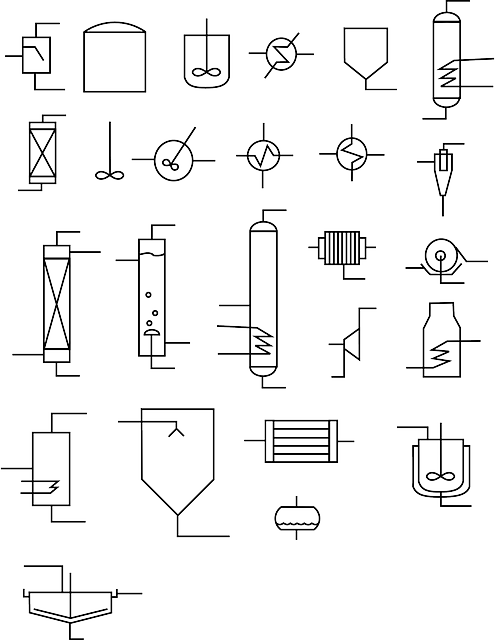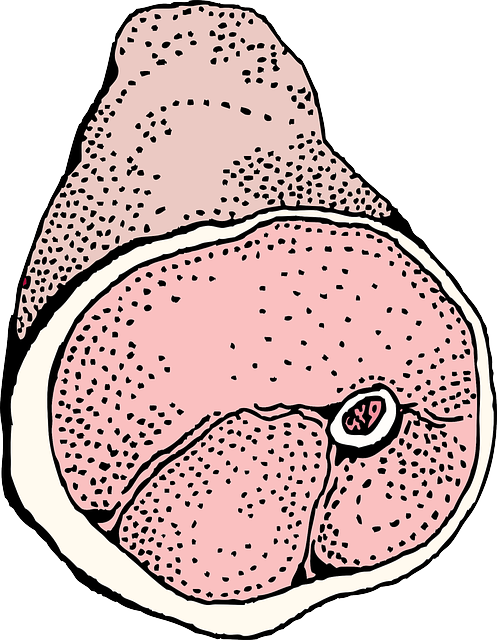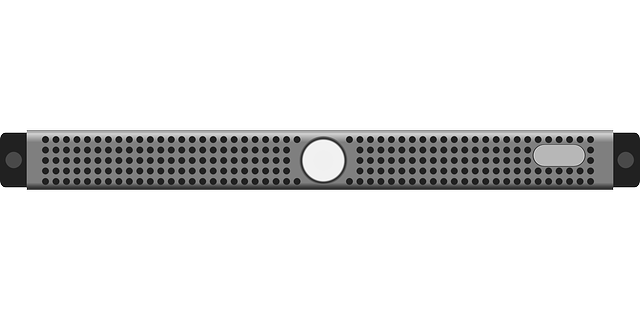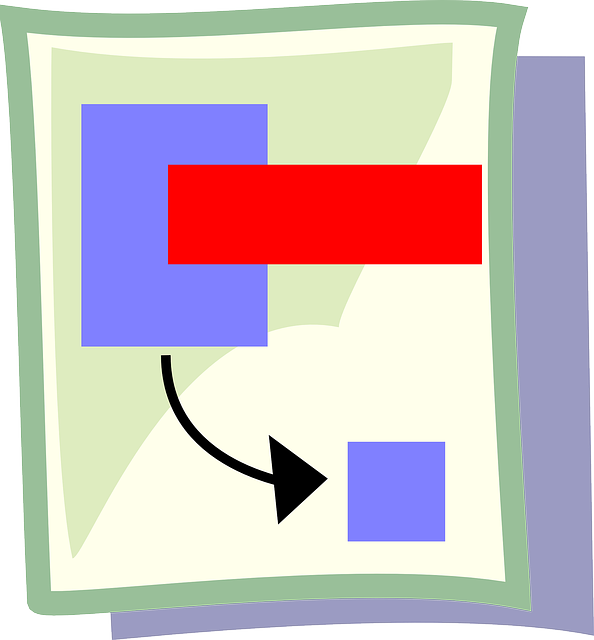JQuery
| المؤلف الأصلي | John Resig | ||||||||||||||||
|---|---|---|---|---|---|---|---|---|---|---|---|---|---|---|---|---|---|
| المطوّر | The jQuery Team | ||||||||||||||||
| الإطلاق المبدئي | 26 أغسطس 2006 | ||||||||||||||||
| الإصدار المستقر | 3.3.1
/ (20 يناير 2018
|
||||||||||||||||
| المستودع | [{{#property:P1324 {{#property:P1324 ] | ||||||||||||||||
| وضع التطوير | Active | ||||||||||||||||
| مكتوب بلغة | جاڤاسكريپت | ||||||||||||||||
| المنصة | See Browser support | ||||||||||||||||
| الحجم |
|
||||||||||||||||
| النوع | مخطة جاڤاسكريپت | ||||||||||||||||
| الرخصة | MIT | ||||||||||||||||
| المسقط الإلكتروني | jquery.com | ||||||||||||||||
jQuery جىكوِري هي مخطة جاڤاسكريپت عبر المنصات مصممة لتبسيط client-side scripting of HTML. وهي برمجية حرة ومفتوحة المصادر باستخدام رخصة MIT التي تتيح ذلك. تحليل الوب يبين أنها أكثر مخطات جاڤاسكريپت استخداماً في العالم وبفارق كبير عما يليها.
jQuery's syntax is designed to make it easier to navigate a document, select DOM elements, create animations, handle events, and develop Ajax applications. jQuery also provides capabilities for developers to create plug-ins on top of the JavaScript library. This enables developers to create abstractions for low-level interaction and animation, advanced effects and high-level, themeable widgets. The modular approach to the jQuery library allows the creation of powerful dynamic web pages and Web applications.
The set of jQuery core features—DOM element selections, traversal and manipulation—enabled by its selector engine (named "Sizzle" from v1.3), created a new "programming style", fusing algorithms and DOM data structures. This style influenced the architecture of other JavaScript frameworks like YUI v3 and Dojo, later stimulating the creation of the standard Selectors API.
ميكروسوفت ونوكيا يحزمان jQuery ضمن منصاتهما. Microsoft includes it with Visual Studio for use within Microsoft's ASP.NET AJAX and ASP.NET MVC frameworks while Nokia has integrated it into the Web Run-Time widget development platform.
استعراض
jQuery, at its core, is a Document Object Model (DOM) manipulation library. The DOM is a tree-structure representation of all the elements of a Web page. jQuery simplifies the syntax for finding, selecting, and manipulating these DOM elements. For example, jQuery can be used for finding an element in the document with a certain property (e.g. all elements with an h1 tag), changing one or more of its attributes (e.g. color, visibility), or making it respond to an event (e.g. a mouse click).
jQuery also provides a paradigm for event handling that goes beyond basic DOM element selection and manipulation. The event assignment and the event callback function definition are done in a single step in a single location in the code. jQuery also aims to incorporate other highly used JavaScript functionality (e.g. fade ins and fade outs when hiding elements, animations by manipulating CSS properties).
The principles of developing with jQuery are:
- Separation of JavaScript and HTML: The jQuery library provides simple syntax for adding event handlers to the DOM using JavaScript, rather than adding HTML event attributes to call JavaScript functions. Thus, it encourages developers to completely separate JavaScript code from HTML markup.
- Brevity and clarity: jQuery promotes brevity and clarity with features like "chainable" functions and shorthand function names.
- Elimination of cross-browser incompatibilities: The JavaScript engines of different browsers differ slightly so JavaScript code that works for one browser may not work for another. Like other JavaScript toolkits, jQuery handles all these cross-browser inconsistencies and provides a consistent interface that works across different browsers.
- Extensibility: New events, elements, and methods can be easily added and then reused as a plugin.
التاريخ
jQuery was originally released in January 2006 at BarCamp NYC by John Resig and was influenced by Dean Edwards' earlier cssQuery library. It is currently maintained by a team of developers led by Timmy Willison (with the jQuery selector engine, Sizzle, being led by Richard Gibson).
jQuery was originally licensed under the CC BY-SA 2.5, and relicensed to the MIT license in 2006. At the end of 2006, it was dual-licensed under GPL and MIT licenses. As this led to some confusion, in 2012 the GPL was dropped and is now only licensed under the MIT license.
In 2015, jQuery was used on 63% of the top 1 million websites (according to BuiltWith), and 17% of all Internet websites. As of June 2018, jQuery is used on 73% of the top 1 million websites, and by 22.4% of all websites (according to BuiltWith).
المميزات
jQuery includes the following features:
- DOM element selections using the multi-browser open source selector engine Sizzle, a spin-off of the jQuery project
- DOM manipulation based on CSS selectors that uses elements' names and attributes, such as id and class, as criteria to select nodes in the DOM
- Events
- Effects and animations
- Ajax
- Deferred and Promise objects to control asynchronous processing
- JSON parsing
- Extensibility through plug-ins
- Utilities, such as feature detection
- Compatibility methods that are natively available in modern browsers, but need fallbacks for older browsers, such as
jQuery.inArray()andjQuery.each(). - Cross-browser support
دعم المتصفح
jQuery 3.0 & newer supports "current−1 versions" (meaning the current stable version of the browser and the version that preceded it) of Firefox, Chrome, Safari, and Edge as well as Internet Explorerتسعة & newer. On mobile it supports iOSسبعة & newer and Android 4.0 & newer.
التوزيع
The jQuery library is typically distributed as a single JavaScript file that defines all its interfaces, including DOM, Events, and Ajax functions. It can be included within a Web page by linking to a local copy, or by linking to one of the many copies available from public servers. jQuery has a content delivery network (CDN) hosted by MaxCDN. Google and Microsoft host the library as well.
Example of linking a copy of the library locally (from the same server that hosts the Web page):
<script src="jquery.js"></script>
Example of linking a copy of the library from jQuery's public CDN:
<script
src="https://code.jquery.com/jquery-3.3.1.min.js"
integrity="sha256-FgpCb/KJQlLNfOu91ta32o/NMZxltwRo8QtmkMRdAu8="
crossorigin="anonymous"></script>
Interface
الدوال
jQuery provides two kinds of functions, static utility functions and jQuery object methods. Each has its own usage style.
Both are accessed through jQuery's main identifier: jQuery. This identifier has an alias named $. All functions can be accessed through either of these two names.
وسائل jQuery
The jQuery function is a factory for creating a jQuery object that represents one or more DOM nodes. jQuery objects have methods to manipulate these nodes. These methods (sometimes called commands), are as each method also returns a jQuery object.
Access to and manipulation of multiple DOM nodes in jQuery typically begins with calling the $ function with a CSS selector string. This returns a jQuery object referencing all the matching elements in the HTML page. $("div.test"), for example, returns a jQuery object with all the div elements of class test. This node set can be manipulated by calling methods on the returned jQuery object.
Static utilities
These are utility functions and do not directly act upon a jQuery object. They are accessed as static methods on the jQuery or $ identifier. For example, $.ajax() is a static method.
No-conflict mode
jQuery provides a $.noConflict() function, which relinquishes control of the $ name. This is useful if jQuery is used on a Web page also linking another library that demands the $ symbol as its identifier. In no-conflict mode, developers can use jQuery as a replacement for $ without losing functionality.
نقطة البدء النمطية
Typically, jQuery is used by putting initialization code and event handling functions in $(handler). This is triggered by jQuery when the browser has finished constructing the DOM for the current Web page.
$(function () {
// This anonymous function is called when the page has completed loading.
// Here, one can place code to create jQuery objects, handle events, etc.
);
or
$(fn); // The function named fn, defined elsewhere, is called when the page has loaded.
Historically, $(document).ready(callback) has been the de-facto idiom for running code after the DOM is ready. However, since jQuery 3.0, developers are encouraged to use the much shorter $(handler) signature instead.
التسلسل
jQuery object methods typically also return a jQuery object, which enables the use of method chains:
$('div.test')
.on('click', handleTestClick)
.addClass('foo');
This line finds all div element with class attribute test , then registers an event handler on each element for the "click" event, then adds the class attribute foo to each element.
Certain jQuery object methods retrieve specific values (instead of modifying state). An example of this is the val() method, which returns the current value of a text input element. In these cases, a statement such as $('#user-email').val() cannot be used for chaining as the return value does not reference a jQuery object.
خلق عناصر DOM جديدة
Besides accessing existing DOM nodes through jQuery, it is also possible to create new DOM nodes, if the string passed as the argument to $() factory looks like HTML. For example, the below code finds an HTML select element, and creates a new option element with value "VAG" and label "Volkswagen", which is then appended to the select menu:
$('select#car-brands')
.append($('<option>')
.attr({ value: 'VAG' )
.text('Volkswagen')
);
Ajax
It is possible to make Ajax requests (with cross-browser support) with $.ajax() to load and manipulate remote data.
$.ajax({
type: 'POST',
url: '/process/submit.php',
data: {
name : 'John',
location : 'Boston',
,
).then(function(msg) {
alert('Data Saved: ' + msg);
).catch(function(xmlHttpRequest, statusText, errorThrown) {
alert(
'Your form submission failed.\n\n'
+ 'XML Http Request: ' + JSON.stringify(xmlHttpRequest)
+ ',\nStatus Text: ' + statusText
+ ',\nError Thrown: ' + errorThrown);
);
This example posts the data name=John and location=Boston to /process/submit.php on the server. When this request finishes the success function is called to alert the user. If the request fails it will alert the user to the failure, the status of the request, and the specific error.
The above example uses the .then() and .catch() methods to register callbacks that run when the response has completed. These promise callbacks must be used due to the asynchronous nature of Ajax requests.
jQuery plug-ins
jQuery's architecture allows developers to create plug-in code to extend its function. There are thousands of jQuery plug-ins available on the Web that cover a range of functions, such as Ajax helpers, Web services, datagrids, dynamic lists, XML and XSLT tools, drag and drop, events, cookie handling, and modal windows.
An important source of jQuery plug-ins is the plugins subdomain of the jQuery Project website. The plugins in this subdomain, however, were accidentally deleted in December 2011 in an attempt to rid the site of spam. The new site will include a GitHub-hosted repository, which will require developers to resubmit their plugins and to conform to new submission requirements. There are alternative plug-in search engines such as jquer.in that take more specialized approaches, such as listing only plug-ins that meet certain criteria (e.g. those that have a public code repository). jQuery provides a "Learning Center" that can help users understand JavaScript and get started developing jQuery plugins.
Release history
| Version number | Release date | Latest update | Size Prod (KB) | Additional notes |
|---|---|---|---|---|
| 1.0 | 26 أغسطس 2006 | First stable release | ||
| 1.1 | 14 يناير 2007 | |||
| 1.2 | 10 سبتمبر 2007 | 1.2.6 | 54 | |
| 1.3 | 14 يناير 2009 | 1.3.2 | 55.9 | Sizzle Selector Engine introduced into core |
| 1.4 | 14 يناير 2010 | 1.4.4 | 76 | |
| 1.5 | 31 يناير 2011 | 1.5.2 | 83 | Deferred callback management, ajax module rewrite |
| 1.6 | 3 مايو 2011 | 1.6.4 | 89 | Significant performance improvements to the attr() and val() functions |
| 1.7 | 3 نوفمبر 2011 | 1.7.2 (21 مارس 2012) | 92 | New Event APIs: .on() and .off(), while the old APIs are still supported. |
| 1.8 | 9 أغسطس 2012 | 1.8.3 (13 نوفمبر 2012) | 91.4 | Sizzle Selector Engine rewritten, improved animations and $(html, props) flexibility. |
| 1.9 | 15 يناير 2013 | 1.9.1 (4 فبراير 2013 | 90 | Removal of deprecated interfaces and code cleanup |
| 1.10 | 24 مايو 2013 | 1.10.2 (3 يوليو 2013) | 91 | Incorporated bug fixes and differences reported from both the 1.9 and 2.0 beta cycles |
| 1.11 | 24 يناير 2014 | 1.11.3 (28 أبريل 2015) | 95.9 | |
| 1.12 | 8 يناير 2016 | 1.12.4 (20 مايو 2016) | 95 | |
| 2.0 | 18 أبريل 2013 | 2.0.3 (3 يوليو 2013) | 81.1 | Dropped IE 6–8 support for performance improvements and reduction in filesize |
| 2.1 | 24 يناير 2014 | 2.1.4 (28 أبريل 2015) | 82.4 | |
| 2.2 | 8 يناير 2016 | 2.2.4 (20 مايو 2016) | 85.6 | |
| 3.0 | 9 يونيو 2016 | 3.0.0 (9 يونيو 2016) | 86.3 | Promises/A+ support for Deferreds, $.ajax and $.when, .data() HTML5-compatible |
| 3.1 | 7 يوليو 2016 | 3.1.1 (23 سبتمبر 2016) | 86.3 | jQuery.readyException added, ready handler errors are now not silenced |
| 3.2 | 16 مارس 2017 | 3.2.1 (20 مارس 2017) | 84.6 | Added support for retrieving contents of <template> elements, and deprecation of various old methods.
|
| 3.3 | 19 يناير 2018 | 3.3.1 (20 يناير 2018) | 84.8 | Deprecation of old functions, functions that accept classes now also support them in array format. |
إطار الاختبار
QUnit is a test automation framework used to test the jQuery project. The jQuery team developed it as an in-house unit testing library. The jQuery team uses it to test its code and plugins, but it can test any generic JavaScript code, including server-side JavaScript code.
As of 2011, the jQuery Testing Team uses QUnit with TestSwarm to test each jQuery codebase release.
انظر أيضاً
- Comparison of JavaScript frameworks
- jQuery Mobile
- jQuery UI
- Globalize
الهامش
- ^ "jQuery 3.3.1 Released!". jQuery Blog. jQuery Foundation.
- ^ "jQuery Project License". jQuery Foundation. Retrieved 2017-03-11.
- ^ "jQuery: The write less, do more, JavaScript library". The jQuery Project. Retrieved 29 April 2010.
- ^ "Usage of JavaScript libraries for websites". Retrieved 2017-02-11.
- ^ "Libscore". Retrieved 2017-02-11.
- ^ "Selectors API Level 1, W3C Recommendation" (21 February 2013). This standard turned what was jQuery "helper methods" into JavaScript-native ones, and the wide use of jQuery stimulated the fast adoption of querySelector/querySelectorAll into main Web browsers.
- ^ Resig, John (2008-09-28). "jQuery, Microsoft, and Nokia". jQuery Blog. jQuery. Retrieved 2009-01-29.
- ^ Guthrie, Scott (2008-09-28). "jQuery and Microsoft". ScottGu's Blog. Retrieved 2009-01-29.
- ^ "Guarana UI: A jQuery Based UI Library for Nokia WRT". Forum Nokia. Archived from the original on 2009-11-23. Retrieved 2010-03-30.
- ^ York, Richard (2009). . Wiley. p. 28. ISBN .
- ^ Resig, John (2007-10-31). "History of jQuery". Retrieved 2017-01-28.
- ^ jquery-under-the-mit-license on jquery.org (2006)
- ^ license on jquery.org (archived 2010)
- ^ jquery-licensing-changes on jquery.org (2012)
- ^ "Handling 15,000 requests per second: The Growth Behind jQuery". www.maxcdn.com (in الإنجليزية). MaxCDN. 20 June 2015. Retrieved 2018-07-02.
- ^ "jQuery Usage Statistics". trends.builtwith.com (in الإنجليزية). Retrieved 2018-07-02.
- ^ Resig, John (2009-01-14). "jQuery 1.3 and the jQuery Foundation". jQuery Blog. Retrieved 2009-05-04.
- ^ Browser Support | jQuery
- ^ jquery.org, jQuery Foundation -. "jQuery CDN".
- ^ "Google Libraries API - Developer's Guide". code.google.com. Retrieved March 11, 2012.
- ^ "Microsoft Ajax Content Delivery Network". ASP.net. Microsoft Corporation. Retrieved June 19, 2012.
- ^ js.foundation, JS Foundation -. "jQuery() | jQuery API Documentation". api.jquery.com (in الإنجليزية). Retrieved 2018-07-02.
- ^ "jQuery.noConflict() jQuery API Documentation".
- ^ jquery.org, jQuery Foundation -. "jQuery Core 3.0 Upgrade Guide - jQuery".
- ^ "Plugins". The jQuery Project. Retrieved 26 August 2010.
- ^ "What Is Happening To The jQuery Plugins Site?". jQuery Blog. Retrieved 22 April 2015.
- ^ "jquery/plugins.jquery.com". GitHub. Retrieved 22 April 2015.
- ^ Kanakiya, Jay. "jquery plugins".
- ^ "jQuery Learning Center". jQuery Foundation. Retrieved 2014-07-02.
- ^ Chesters, James (2016-06-15). "Long-awaited jQuery 3.0 Brings Slim Build". infoq.com. Retrieved 2017-01-28.
- ^ "jQuery 3.2.0 Is Out!". jQuery Blog. 16 March 2017. Retrieved 12 March 2018.
- ^ "History". qunitjs.com. Retrieved 2014-07-02.
- ^ "jQuery Testing Team Wiki".
للاستزادة
- John Resig (speaker) (2007-04-13). (YouTube video). YUI Theater. Retrieved 2018-01-09.
- Krill, Paul (2006-08-31). "JavaScript, .Net developers aided in separate project". InfoWorld. Retrieved 2009-05-04.
- Taft, Darryl K. (2006-08-30). "jQuery Eases JavaScript, AJAX Development". eWeek. Retrieved 2009-05-04.
وصلات خارجية
| مشاع الفهم فيه ميديا متعلقة بموضوع JQuery. |
- Official website
نطقب:Application frameworks نطقب:Widget toolkits
















